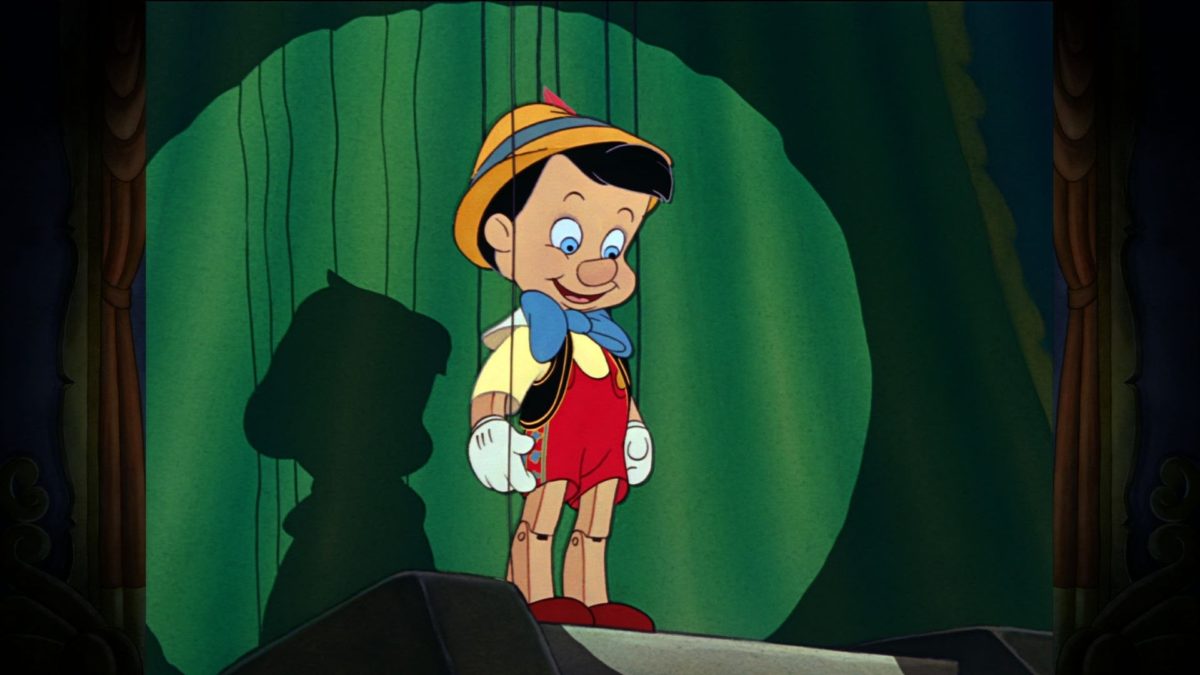Pinocchio is typically regarded as the most beautiful hand-drawn animated film in Hollywood history, and I’m not going to strenuously object to the claim. Everything about the film’s animation is impeccable.
Start with the character designs: Pinocchio himself is an icon, broad boyish strokes that also always looks stiff and wooden so we don’t forget that he’s a marionette. Geppetto’s bulb nose and blue eyes radiate affection. Figaro is one of cinema’s great cats. The Blue Fairy is the film’s most naturalistic design except for the fact that she’s composed of a shimmering translucency that feels like a formal experiment. Go on down the list of villains and side characters and every one is a work of inspiration, none moreso than the nightmarish Mosntro, perhaps the most terrifying sea creature in film history.

But it’s more than just designs, it’s the animation itself, always so fluid and graceful and evocative. The technical skill on display is mind-blowing, with so many moving parts and rich compositions. It’s the kind of movie that always gives you more to look at — the harder you focus and search the edges, the more treasures you’ll uncover. A segment near the opening of Geppetto’s cuckoo clocks coming to life takes my breath away and sets the tone for the rest of the film.
Pinocchio evokes so many emotions throughout its story, but I think its most effective and profound effect is childlike terror. The world around us when we’re children is difficult to comprehend and filled with dangers. The sequence at Pleasure Island when Lampwick turns into a donkey is a pubertal fever dream, maybe my favorite scene in the film. Meanwhile, Monstro’s pursuit of Pinocchio and Geppetto in the climax is heart-racing action.
The actual plot of Pinocchio has more momentum than Snow White, its predecessor, but is still the weakest part of the film. The story is choppy and episodic, resetting itself multiple times. It takes awhile for Pinocchio to come to life, then he ends up in Stromboli’s show, then barely survives Pleasure Island, before we get to the part of the movie that feels like a story arc proper: Pinocchio risking his life to save his father.

It’s not just the chunky, uneven plot, but the lack of character agency that makes the story’s first two thirds feel so misshapen. Pinocchio floats through the scenarios without much reason or insight. They’re just situations Pinocchio happens to be in — compelling scenarios to be sure, but distinct and oddly-paced episodes.
There’s some thematic looseness in the film, which is fine, too: The blue fairy implores Pinocchio become “brave, truthful, and unselfish,” but none of his misadventures prior to the rescue of Geppetto really do much to challenge or develop those traits. So what are we supposed to talk away from his trials and tribulations, other than viewing the world as a harsh, cruel place?
Thankfully, it all comes together by the time the film wraps in its moving and satisfying final act. And even when the story is rambling down some side road rather than accelerating to its destination, its captured in such profound animation that it hardly matters. Pinocchio is an unmissable milestone and an enduring visual delight.
Is It Good?
Exceptionally Good (7/8)
Dan is the founder and head critic of The Goods. Follow Dan on Letterboxd. Join the Discord for updates and discussion.

